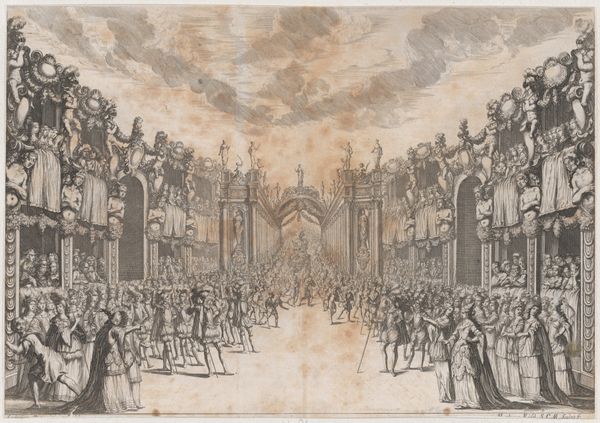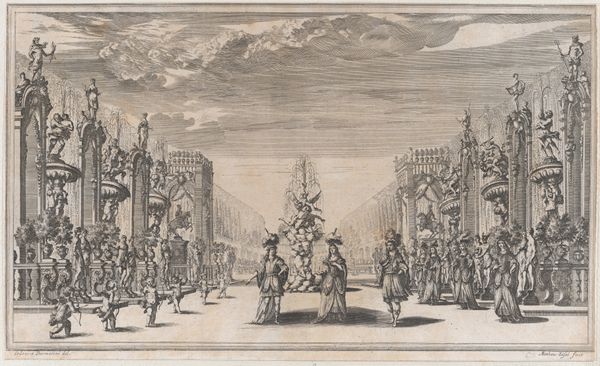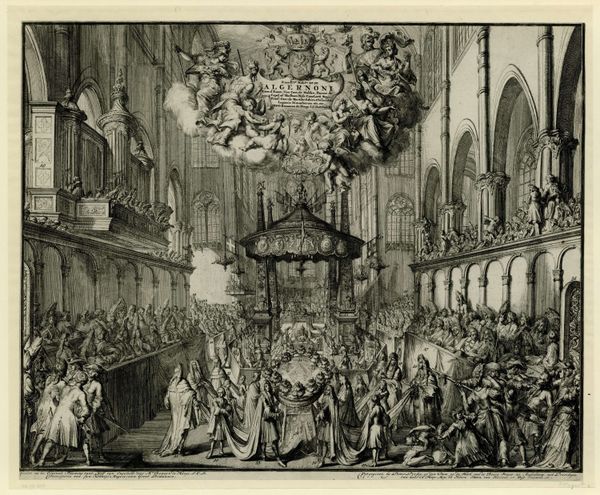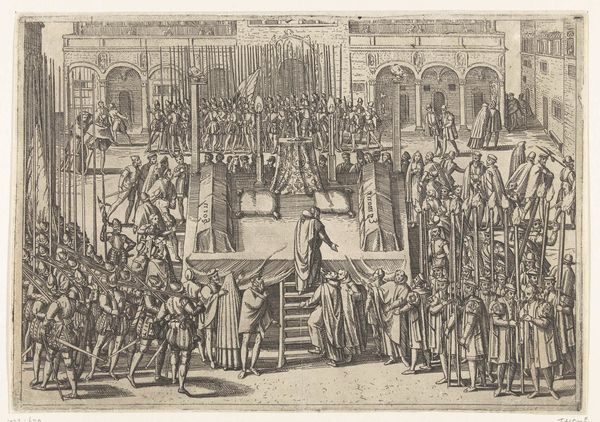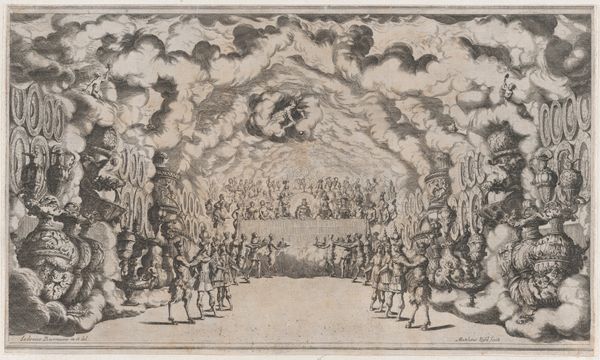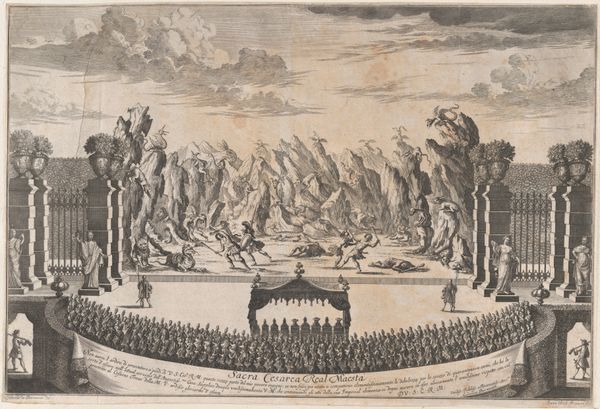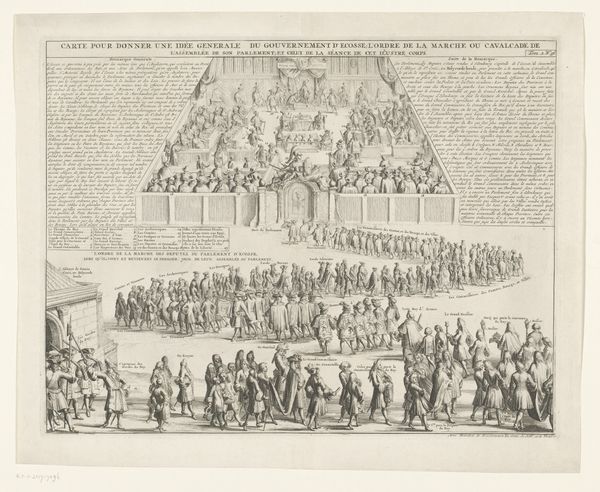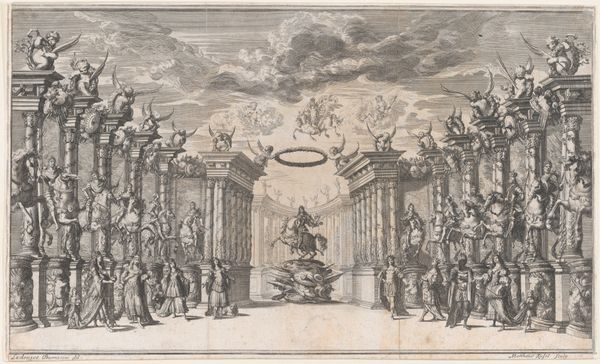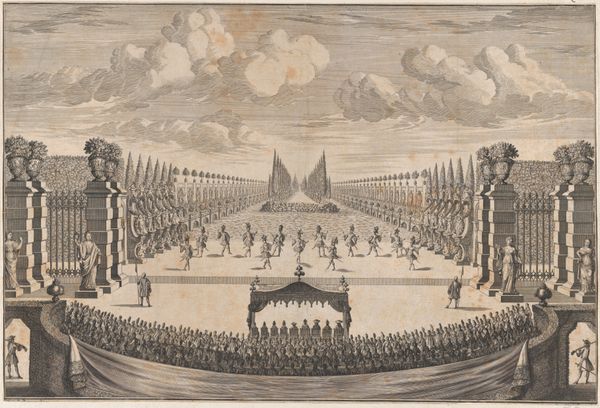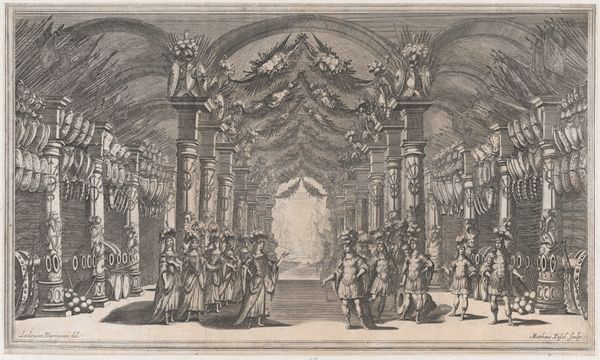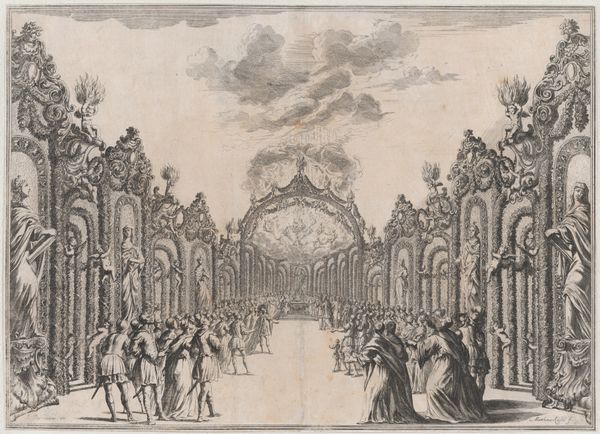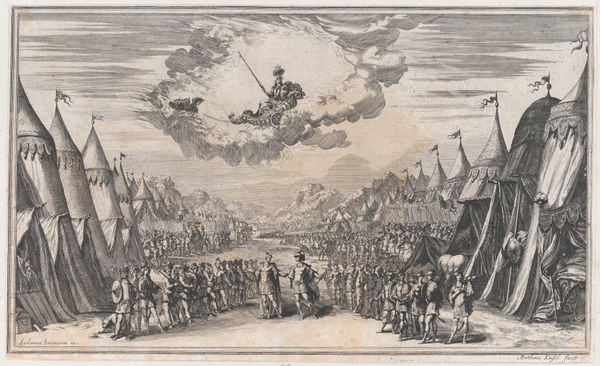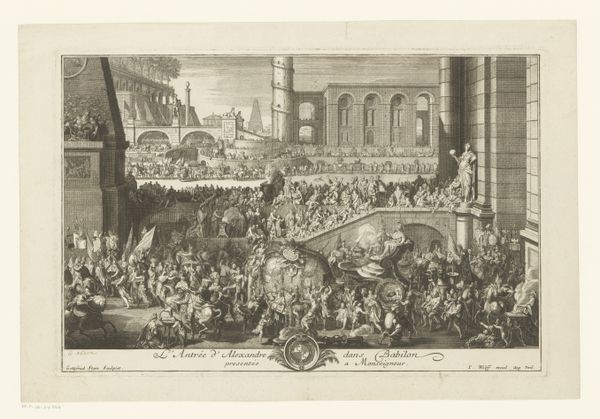
Magnificent Hall of Astrea; men and women gathered in the street to view a procession through a triumphal arch and down the stairs into the city; the procession is led by a female wearing a crown, she is followed by various figures in varying costume; set design from 'La Monarchia Latina Trionfante' 1678
0:00
0:00
drawing, print, engraving
#
drawing
#
allegory
#
baroque
# print
#
figuration
#
line
#
cityscape
#
history-painting
#
engraving
Dimensions: Sheet (Trimmed): 11 13/16 in. × 17 in. (30 × 43.2 cm)
Copyright: Public Domain
Curator: What a spectacular scene! The Met houses this detailed engraving, made in 1678 by Matthäus Küsel. It's called 'Magnificent Hall of Astrea; men and women gathered in the street to view a procession through a triumphal arch'. Editor: It certainly is spectacular! The initial impression is overwhelmingly… hierarchical. It's this strict visual organization of figures arranged by status and power, drawing your eye directly to that central, crowned figure. Curator: Absolutely, that's Astrea, the classical goddess of justice, returning to earth! The entire procession, framed by that magnificent triumphal arch, speaks to a desire for renewed order. This work originates as a stage design for a court spectacle. Those triumphal entries of rulers are meticulously staged and loaded with significance. The images all convey the monarch’s legitimacy and divine right to rule. Editor: It's visually fascinating how Küsel has arranged the composition using both line and the distribution of light and shadow. Those figures flanking the procession—are they allegorical representations, perhaps of virtues and vanquished vices? They contribute to this overall sense of structured grandeur. The detail achieved in engraving captures a kind of baroque theatricality, I’m thinking. Curator: You've hit on a key point. These are classical allegories of virtues like Justice and Fortitude alongside figures representing defeated vices – literally the foundation on which the ruler stands. They signal the monarch’s strength and the restored reign of just rule and peace on Earth. Notice that figure rising in the clouds above. She's another figure of victory who's come to deliver power and majesty, while down on Earth, people pay homage to the triumphator! Editor: And how all this meaning, layered within the images, works through line and light in relation to composition! All these symbolic components come together. Curator: It's a powerful piece, demonstrating how rulers employed art as a tool of ideological persuasion. The cultural memory and continuity are obvious through these visual symbols and their meanings at the time. Editor: Exactly. From a formalist perspective, analyzing those lines and that shading reveals that intended sense of awe and control. Both form and content merge into a convincing statement of baroque authority.
Comments
No comments
Be the first to comment and join the conversation on the ultimate creative platform.
